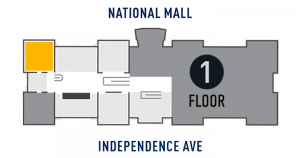Bastow-Page Ground-Adjustable-Pitch Airship Propeller
This first metal and ground-adjustable-pitch propeller was designed and built by Stuart Bastow, an electrical sign contractor, and Victor Pagé, a mechanical engineer, for the dirigible Rhode Island in 1910. Bastow bought a bamboo and fabric propeller and the propulsion system from Capt. Thomas Scott Baldwin's California Arrow. Pagé, unsatisfied, suggested constructing a propeller from aluminum, then a relatively new, but proven material, because of its light weight and strength.
The aluminum blades were riveted to steel tubing connected through a threaded joint to a central aluminum hub, and retained an aerodynamic shape while the steel tubing provided the required strength to offset centrifugal force. Not knowing which pitch setting would be best for the dirigible, except through trial-and-error, they designed the propeller to be adjustable on the ground; resulting in the earliest American attempt at multipiece construction that facilitated deliberate pitch variation. This propeller emerged unscathed during several forced landings, which indicated its inherent performance and durability benefits.
This object is on display in Early Flight at the National Air and Space Museum in Washington, DC.

Hub and Blade Supports: Steel
For more information, visit the Smithsonians Terms of Use.